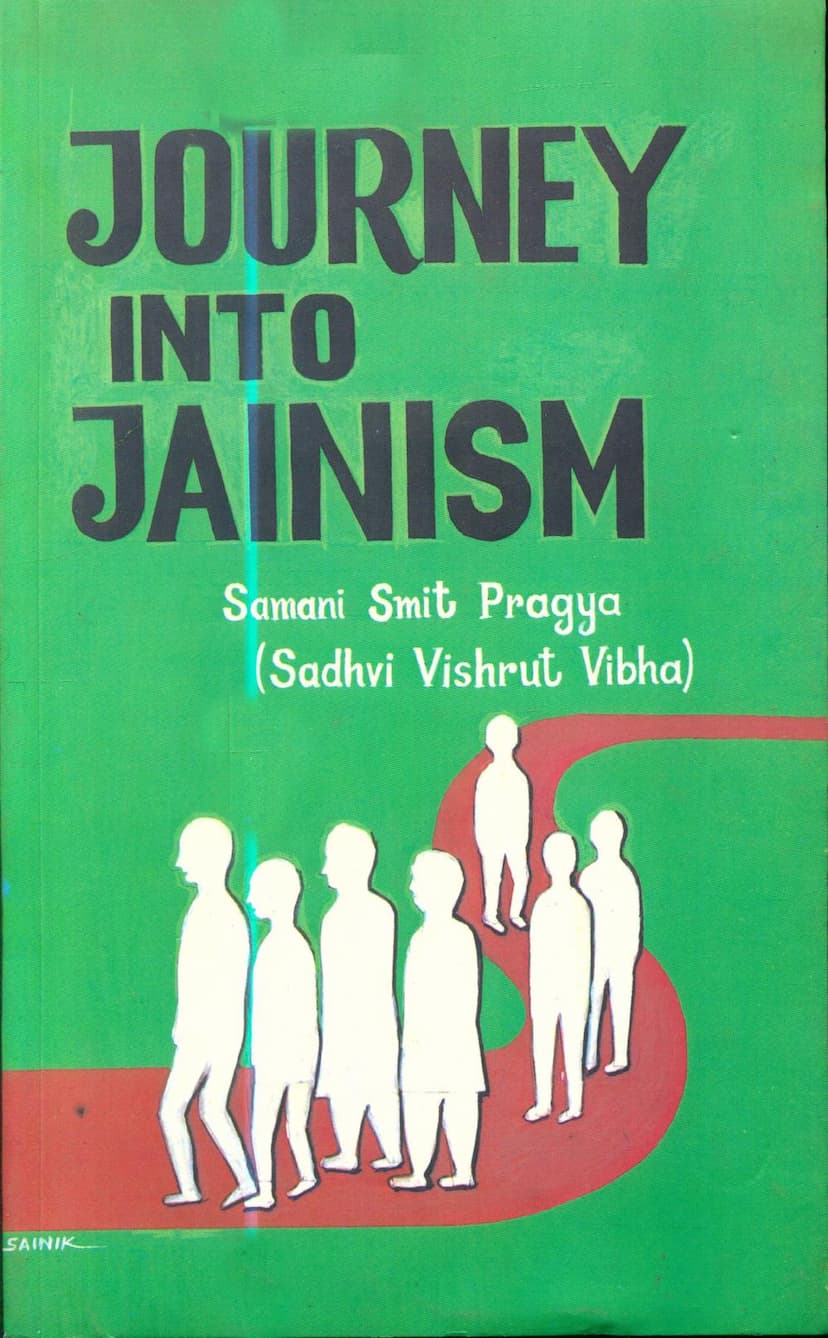Journey Into Jainism
Added to library: September 2, 2025

Summary
"Journey Into Jainism" by Samani Smit Pragya (Sadhvi Vishrut Vibha) is a collection of short stories aimed at introducing the fundamental principles and values of Jainism, particularly to a younger generation educated in English. The book, published by B. Jain Publishers Pvt. Ltd., was first released in 1996 and has seen multiple reprints.
Core Purpose and Inspiration: The book's creation was inspired by requests from people abroad, particularly young individuals, who wanted to understand Jain culture and philosophy through engaging narratives. The author, Sadhvi Vishrut Vibha, a disciple of Acharya Shri Tulsi and a member of the Saman Order (created to facilitate the propagation of Jainism abroad), recognized the need for accessible Jain literature in English for both international and Indian audiences. The book aims to convey even complex Jain doctrines with simplicity and appeal to all age groups.
Key Jain Values Presented Through Stories: The collection focuses on various virtues central to Jainism, illustrated through historical and canonical stories. Some of the values explored include:
- Equanimity: The story of Muni Kuurgaduk demonstrates maintaining mental calmness and balance even when facing difficulties and criticism.
- Non-Violence (Ahimsa): The narrative of Sulas highlights the innate aversion to violence and the courage to stand against brutal family traditions, even at personal cost.
- Pure Thought: Stories of Prasannachandra and Marudevaa illustrate how cultivating pure thoughts can lead to spiritual enlightenment and the shedding of karmic bondage.
- Resolution: Bhavadeva's journey explores the challenges of maintaining commitment to one's vows amidst worldly temptations and the importance of firm resolve.
- Forgiveness: Dridhaprahaari's tale showcases the transformative power of compassion and forgiveness, leading from a life of crime to spiritual realization.
- Self-Control: The story of Muni Sthuulibhadra emphasizes mastering one's senses and desires, even in challenging environments, as the true mark of spiritual strength.
- Simple-Heartedness: Atimuktaka's story illustrates how genuine joy and spiritual progress can be found in simplicity and an unadulterated spirit.
- Contentment: Kapil's experience shows the danger of greed and the ultimate realization that true peace comes from satisfaction with what one has.
- Inspiration: Prince Prabhava's transformation from a thief to a spiritual seeker demonstrates the profound impact of witnessing exemplary virtue.
- Renunciation (Vairagya): Stories like those of Sangam (reborn as Shaalibhadra) and Metaarya depict the act of giving up worldly attachments for a higher spiritual purpose.
- Tolerance: Skandhak and Nala's stories illustrate the virtue of enduring hardships and societal pressures with patience and understanding.
- Satisfaction: Mamman's tale warns against insatiable greed, contrasting it with genuine contentment.
- Forbearance: Meghakumar's story teaches the importance of patience and controlling anger, drawing lessons from past lives.
- Giving Alms (Daan): Shreyaansa Kumar's story highlights the merit of selfless giving, particularly to those engaged in spiritual penance.
- Humbleness: The story of the Guru's two pupils emphasizes wisdom gained through politeness and humility over arrogance.
- Self-Realization: Anaathi's journey underscores that true shelter comes from within, and personal destiny is self-created.
- Repentance: Suvrat and Mrigaavati's experiences demonstrate the purifying power of acknowledging and regretting mistakes.
- Truthfulness: Anand's story validates the profound consequences and spiritual attainment possible through unwavering adherence to truth.
- Kindness: The narratives of Arishtanemi and Rajimati emphasize compassion towards all living beings and the rejection of cruelty.
- Calmness: The teacher's unfortunate encounter illustrates the perils of anger and the virtue of remaining composed.
- Controlling Greed: Jaichand's fate serves as a stark warning about the destructive nature of unchecked desire.
- Self-Analysis: Rohineya's transformation shows how introspection can lead to understanding and correcting one's life choices.
- Modesty: Sthuulabhadra's story highlights the importance of humility in the pursuit of knowledge and spiritual growth.
- Purity: Bhatta's journey illustrates the power of inner purity and virtue to overcome external challenges and temptations.
- Celibacy: Rathnemi's story emphasizes the discipline and dedication required for spiritual vows, especially in the face of desire.
- Chastity: Subhadra's ordeal demonstrates the strength of maintaining one's principles and faith even when faced with deceit and persecution.
- Faith: Aranak's experience at sea showcases the steadfastness of religious belief in the face of extreme danger.
- Detachment: Ardrak's life story shows the process of letting go of worldly attachments for spiritual pursuit.
- Patience: Anjana's enduring trials exemplify the virtue of steadfastness and resilience in adversity.
- Monkhood: Thaavaacha Putta's decision reflects the ultimate goal of escaping the cycle of birth and death through spiritual discipline.
- Self-Awareness: Kamdeva's encounter with a demon highlights the power of inner consciousness and mental fortitude in overcoming challenges.
Overall Message: "Journey Into Jainism" serves as an accessible and inspiring gateway to understanding Jain philosophy through relatable stories. It emphasizes the importance of moral values, self-discipline, and spiritual pursuit, offering timeless wisdom for personal growth and enlightenment.